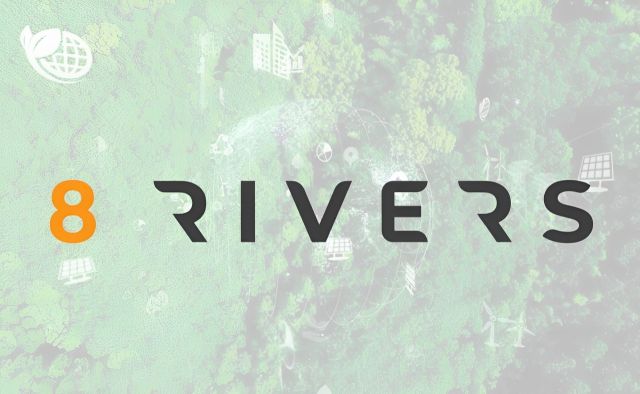
8 Rivers’ pilot project will test how well the technology absorbs CO2 from the atmosphere, determine the energy efficiency of operations and how to automate operations to scale. (Source: Shutterstock/ 8 Rivers Capital)
Direct air capture (DAC) technology that clean tech company 8 Rivers Capital aims to commercialize is getting a financial boost from Japan’s JX Nippon Oil Exploration.
North Carolina-based 8 Rivers, the company behind the calcite DAC technology that uses a calcium sorbent to capture carbon from the atmosphere, said the investment will support the technology’s deployment as it shifts from pilot to commercial development mode. The investment amount was not disclosed in a Sept. 17 press release.
“We’re going to be using the proceeds to fund the development of a pilot, which will prove the efficacy of the calcite solution, and then the remaining funds will go towards the commercial plant we call Project Cardinal [to execute] the FEED study for that project,” Mike Adams, senior vice president of capital management for 8 Rivers, told Hart Energy.
Project Cardinal is part of a U.S. Department of Energy-sponsored DAC hub, the Southeast DAC (SEDAC) Hub in Alabama, and will represent the first commercial deployment of 8 Rivers’ Calcite technology. Led by the Southern States Energy Board, the SEDAC hub aims to capture about 50,000 tonnes per year of CO2 from the air using Calcite as one of the hub’s anchor technologies.
Considered a nascent market focused on lowering emissions, DAC involves extracting CO2 directly from the atmosphere. The captured CO2 can be stored deep underground or used for other applications such as EOR and for products such as concrete, bioplastics, fuels and metal alternatives.
Compared to other carbon capture technologies, including those that capture carbon from concentrated industrial processes or from diluted sources, DAC falls on the most expensive end of carbon capture technology. It is considered more challenging, and costly, to pluck carbon from air not located near emission point sources.
“The proprietary Calcite process enhances the natural carbon absorbing properties of hydrated lime, reacting it with ambient air to form limestone,” the company said on its website. “The limestone is then heated by an oxygen-fired kiln, which separates the CO2 for sequestration and produces additional hydrated lime to be recycled into the system.”
8 Rivers, however, says its calcite technology less expensive.
“Two things, for us, make it low cost. One is a very low cost and abundant absorbent material. The Calcite is a calcium carbonate loop and therefore our absorbed material is an abundantly available molecule in the form calcium carbonate,” Adams said. “And then the rest of the process, what makes it low cost is choosing to use as much as we can commercially available equipment from reputable suppliers. … We’re not inventing supply chains here.”
He added, “we’ve designed it for scalability so that we can do materials handling in a way that keeps the overall energy cost within the project low.”
8 Rivers’ pilot project will test how well the technology absorbs CO2 from the atmosphere, determine the energy efficiency of operations and how to automate operations to scale.
Project Cardinal is scheduled to start FEED in 2025. Construction is expected to follow, if the project attracts enough capital to proceed with plans.
The JX Nippon investment “comes at an important time for our company and the industry and validates our Calcite DAC platform as a leading solution for the global energy transition,” 8 Rivers CEO Christopher Richardson said in a news release. “We are excited to strengthen our partnership with JX and collaborate with their team on Project Cardinal and future Calcite deployments across the Asia-Pacific.”
The investment builds on a relationship formed in 2021 when the two companies agreed to collaborate on technology.
“This is another milestone in our collaborative partnership between 8 Rivers and JX. DAC is one of the key solutions for a carbon neutral society,” said Tetsuo Yamada, chief strategy officer of JX Nippon. “We are confident in the potential of 8 Rivers' DAC solution, ‘Calcite,’ and look forward to its first commercial deployment through Project Cardinal.”
Carbon capture is among JX Nippon’s expertise. The company’s projects include the Petra Nova CCS (carbon capture and storage) project in Texas.
For Adams, a successful DAC project will attract good technical and deployment partners who are able to take technology to other sites. It also has low-cost carbon dioxide removal (CDR) that attracts partners.
“Ultimately, the CDR buyers are a key component of making DAC projects work. And we think with Calcite and with JX at our side, we’ve got the technology and project that’s going to provide the CDR buyers their best source of carbon removals,” he said.
Recommended Reading
Occidental, Ecopetrol Extend Midland Basin Drilling JV
2025-02-03 - The updated plans between Occidental and Colombian state oil company Ecopetrol call for 34 new Midland Basin wells between April 2025 and June 2026.
US Energy Development Corp. Plans $1B Spend, Largely in Permian
2025-02-03 - U.S. Energy Development Corp. is planning to spend up to $1 billion across the Lower 48 this year, with most budgeted for the Permian Basin.
Boaz Energy Completes Sale of PermRock Properties to T2S
2025-04-01 - Boaz Energy II has completed the sale of PermRock Royalty Trust’s underlying oil and gas properties to T2S Permian Acquisition II LLC.
Chevron JV Plans 4-GW Project to Fulfill US Data Center Power Needs
2025-01-28 - Chevron U.S.A. Inc., Engine No. 1 and GE Vernova will develop the natural gas-fired power plants co-located with data centers amid President Trump’s push for AI dominance.
Elk Range Acquires Permian, Eagle Ford Minerals and Royalties
2025-01-29 - Elk Range Royalties is purchasing the mineral and royalty interests of Newton Financial Corp., Concord Oil Co. and Mission Oil Co.
Comments
Add new comment
This conversation is moderated according to Hart Energy community rules. Please read the rules before joining the discussion. If you’re experiencing any technical problems, please contact our customer care team.






